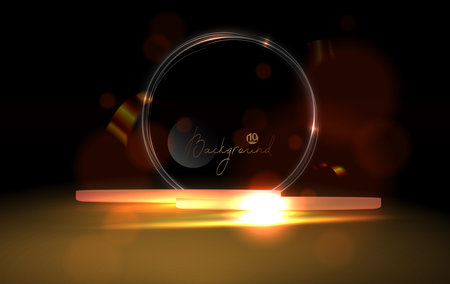Overview of Lighting Technologies in India
India’s lighting landscape has seen significant transformation over the past decade, with a shift from traditional lighting solutions to modern alternatives. In Indian households, commercial spaces, and public infrastructure, two primary categories of lighting technologies dominate the scene: traditional lighting options such as incandescent bulbs, compact fluorescent lamps (CFLs), and tube lights, as well as advanced LED (Light Emitting Diode) solutions. Incandescent bulbs and CFLs have been a staple in many Indian homes due to their affordability and easy availability at local markets and kirana stores. Tube lights are widely used in both residential and commercial setups for their bright illumination and cost-effectiveness. However, with increasing focus on energy efficiency and sustainability, LED lighting has rapidly gained popularity across urban and rural India. LEDs are now found in everything from home interiors to streetlights on highways and municipal projects across cities like Delhi, Mumbai, and Bengaluru. This evolving mix of lighting technologies reflects not only advancements in technology but also changing consumer preferences shaped by economic considerations, government initiatives like UJALA, and heightened awareness about energy conservation among the Indian population.
2. Market Adoption: LEDs vs Traditional Lighting
Over the past decade, the Indian lighting market has witnessed a significant shift from traditional lighting solutions such as incandescent bulbs, CFLs (Compact Fluorescent Lamps), and tube lights to modern LED (Light Emitting Diode) technology. This transformation is driven by factors like government initiatives, greater consumer awareness about energy savings, and the decreasing cost of LED products.
Recent Market Trends
The trend towards LED adoption has been especially prominent in urban areas but is rapidly spreading to semi-urban and rural regions as well. The UJALA scheme launched by the Government of India in 2015 accelerated the replacement of conventional bulbs with LEDs by offering subsidised prices. As a result, millions of households have made the switch to LEDs for both indoor and outdoor applications.
Sales Data Comparison
| Lighting Type | Market Share (2018) | Market Share (2023) |
|---|---|---|
| Incandescent Bulbs | 18% | 4% |
| CFLs | 30% | 10% |
| Tube Lights | 32% | 22% |
| LEDs | 20% | 64% |
This table shows the rapid growth in the market share of LEDs at the expense of traditional lighting options over five years. While incandescent bulbs are almost phased out due to high electricity consumption and government discouragement, CFLs and tube lights still retain some presence in smaller towns and older constructions.
Growth of LED Popularity
The popularity of LEDs in India can be attributed to their longer lifespan, low maintenance requirements, and substantial energy savings—often up to 80% compared to incandescent alternatives. Additionally, Indian consumers are increasingly attracted to features such as instant-on capability, variety in colour temperature, and compatibility with smart home systems.
Conclusion on Market Dynamics
The Indian lighting market now strongly favours LEDs, making them the default choice for new installations and retrofits alike. While traditional lighting continues to exist in legacy systems and budget-sensitive segments, ongoing price reductions and increased availability suggest that LEDs will further consolidate their dominance across India’s diverse consumer landscape.
![]()
3. Factors Influencing Indian Consumer Preferences
The decision between LED and traditional lighting in India is shaped by several unique factors that reflect both economic realities and cultural nuances.
Cost Sensitivity and Upfront Investment
For many Indian households, cost remains a key consideration. While LEDs are more energy-efficient, their higher initial purchase price can be a barrier for budget-conscious consumers, especially in Tier-2 and Tier-3 cities. Traditional incandescent bulbs and CFLs still attract buyers looking for low upfront costs, even if they are aware of the long-term savings with LEDs.
Energy Efficiency and Long-Term Savings
With rising electricity tariffs across states like Maharashtra, Tamil Nadu, and Uttar Pradesh, energy efficiency is increasingly top-of-mind for consumers. Urban Indian families, as well as businesses, are gradually shifting towards LEDs due to their lower power consumption and longer lifespan. The promise of reduced monthly electricity bills is a strong motivator, particularly in metropolitan areas where power costs are high.
Government Schemes and Incentives
The Government of India has played a pivotal role in popularising LED adoption through schemes such as UJALA (Unnat Jyoti by Affordable LEDs for All). Subsidised pricing, bulk procurement, and awareness campaigns have significantly increased LED penetration in both urban and rural markets. Many consumers cite government-backed initiatives as the reason for switching from traditional lighting to LEDs.
Brand Influence and Local Availability
Indian consumers often show loyalty to trusted brands like Philips, Havells, and Syska, which have established credibility in both rural kirana stores and modern retail outlets. The availability of after-sales support and warranty services also influences purchasing decisions. Furthermore, products that are locally manufactured or promoted as “Made in India” tend to resonate more with the patriotic sentiment among buyers.
Cultural Preferences and Aesthetic Appeal
Lighting choices are sometimes influenced by cultural events such as Diwali or weddings, where traditional lamps hold symbolic value. However, LEDs are making inroads even here due to their vibrant colour options and decorative designs, aligning modern technology with traditional celebrations.
Conclusion: A Blend of Rationality and Tradition
In summary, Indian consumer preferences in lighting reflect a blend of rational factors—such as cost-effectiveness and government incentives—and deep-rooted cultural influences. As awareness grows and prices continue to fall, LEDs are set to become even more popular, but the shift will always be nuanced by local needs and sentiments.
4. Cultural and Practical Considerations
Lighting preferences in India are deeply rooted in cultural practices, practical needs, and the vibrant lifestyle of its people. The choice between LED and traditional lighting goes beyond mere technology or cost—it is intricately linked to how Indians celebrate festivals, structure daily routines, and create atmosphere in their homes and public spaces.
The Role of Festivals and Traditions
India’s festival calendar is packed with occasions like Diwali, Navratri, Eid, and Christmas, where illumination plays a central role. Traditional oil lamps (diyas) and incandescent bulbs still hold sentimental value during these times for their warm glow and symbolic meaning. However, LEDs are increasingly being adopted due to their energy efficiency and ability to produce vibrant colors, making them ideal for decorative lighting during celebrations.
Lighting Preferences During Major Festivals
| Festival | Traditional Lighting Usage | LED Adoption | Preference Reasoning |
|---|---|---|---|
| Diwali | High (Diyas & Incandescent) | Rising (Colorful LEDs) | Cultural symbolism vs. modern aesthetics & convenience |
| Navratri | Moderate (String lights) | Increasing (LED strips & lamps) | Energy savings for prolonged use; variety of effects |
| Eid/Christmas | Moderate (Lanterns & bulbs) | Growing (LED fairy lights) | Sustainability & easy setup for décor |
Daily Life and Practicality
The Indian daily routine often involves early mornings and late evenings, requiring reliable lighting for tasks like cooking, studying, or religious rituals. LEDs are gaining favor for their instant brightness and low heat emission—crucial in India’s hot climate. However, some households prefer traditional CFLs or incandescent bulbs in living rooms or bedrooms for their familiar warm tone.
Local Preferences: Warmth, Brightness, and Aesthetics
| Aspect | Traditional Lighting | LED Lighting | Consumer Preference Trend |
|---|---|---|---|
| Warmth (Color Temperature) | High—Yellowish glow preferred for coziness | Tunable from cool to warm white; customizable colors | Younger urban consumers shifting to tunable LEDs; older generations prefer warmth of traditional lights |
| Brightness Levels | Limited control; depends on wattage selected | Easily adjustable; dimmable options available | Dimmable LEDs popular in urban settings; rural users stick to simple controls |
| Aesthetic Value/Designs | Classic designs; vintage appeal during festivities | Sleek, modern fixtures; multi-color capabilities for decoration | Younger buyers attracted by design versatility of LEDs; traditional look retained for cultural events |
The intersection of tradition and innovation shapes the lighting market in India. While practical considerations drive adoption of energy-efficient LEDs in daily life, cultural nuances ensure traditional lighting remains an integral part of celebrations and rituals. As consumer trends evolve, local preferences continue to blend old-world charm with new-age functionality.
5. Regional Differences Across India
India is a country of immense diversity, and this is clearly reflected in the adoption of LED versus traditional lighting across different regions. The urban-rural divide plays a significant role in shaping consumer preferences. In metropolitan cities like Mumbai, Delhi, and Bengaluru, consumers are increasingly shifting towards LED lighting due to better awareness, government initiatives such as UJALA, and easy access to modern retail outlets. Urban households tend to value energy efficiency and longevity, making LEDs a popular choice among the middle class and upwardly mobile segments.
However, rural areas present a contrasting picture. While government schemes have helped increase the penetration of LED bulbs in villages, many rural households still rely on CFLs or even incandescent bulbs due to limited awareness, irregular electricity supply, and budget constraints. In states like Uttar Pradesh and Bihar, traditional lighting remains common among lower-income groups who prioritise initial cost over long-term savings.
Regional differences are also evident between North and South India. Southern states like Kerala and Tamil Nadu have embraced LED technology more rapidly, partly due to active state-level campaigns and higher literacy rates. Eastern states such as West Bengal and Odisha show slower adoption because of logistical challenges and lower purchasing power.
Socio-economic status strongly influences lighting choices across all regions. Affluent families in both urban and semi-urban areas are early adopters of smart LED solutions with features like remote control and colour tuning. Meanwhile, small business owners and shopkeepers often prefer traditional tube lights or CFLs for their perceived reliability and lower upfront investment.
In summary, lighting preferences in India are shaped by a complex interplay of geography, income levels, education, and local government policies. Understanding these regional nuances is crucial for brands looking to cater effectively to the diverse Indian market.
6. Challenges and Opportunities for the Indian Lighting Market
The Indian lighting sector, while witnessing a significant shift towards LED solutions, faces several hurdles that affect both consumers and businesses.
Price Sensitivity and Consumer Adoption
One of the primary challenges in the Indian market is price sensitivity. Despite long-term savings, many households still perceive LED lights as expensive compared to traditional incandescent or CFL bulbs. For middle-income families and rural consumers, the upfront cost remains a crucial factor influencing their choice, slowing down mass adoption.
Infrastructure and Supply Chain Barriers
Another major barrier is infrastructure. Many regions, especially in Tier-II and Tier-III cities or rural areas, lack reliable access to modern retail channels. The distribution network for advanced lighting products is not as robust as that for traditional bulbs. Additionally, frequent power fluctuations can impact the performance of sophisticated LED lighting systems, making traditional options more appealing in some contexts.
Government Initiatives: UJALA and Beyond
The Indian government’s UJALA (Unnat Jyoti by Affordable LEDs for All) program has played a pivotal role in driving LED adoption by distributing energy-efficient bulbs at subsidised rates. This has made LEDs accessible to millions of households, improving awareness and trust in new technology. Besides UJALA, initiatives like Make in India encourage local manufacturing of lighting products, supporting job creation and technology transfer.
Opportunities Ahead
The future of the Indian lighting market looks promising with increasing urbanisation, rising environmental consciousness, and supportive policy frameworks. As production scales up and technology advances, LED prices are expected to decrease further, bridging the affordability gap. Improved supply chains and innovative financing models—like EMI schemes for bulk purchases—can enhance accessibility even in remote locations. With continued education about energy savings and environmental benefits, consumer preferences are likely to shift steadily towards LEDs.

